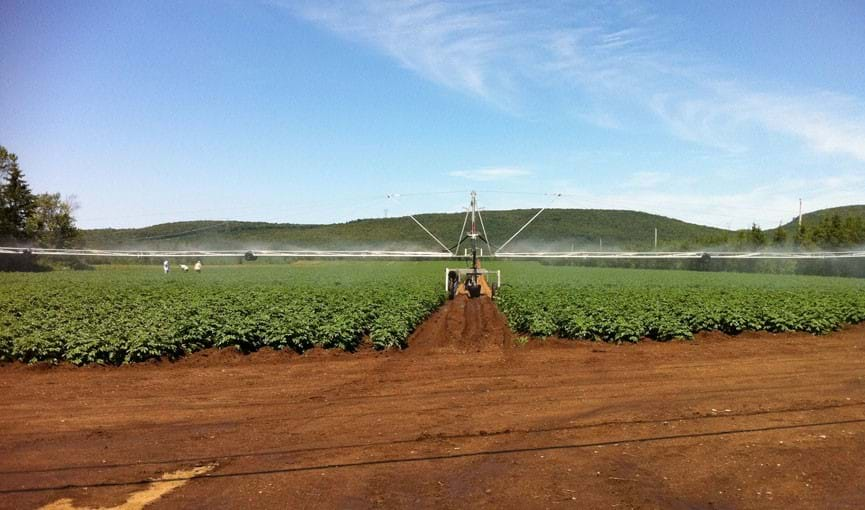An all-new irrigation management guide for the horticultural sector
December 11th, 2018
Centre de référence en agriculture et agroalimentaire du Québec and Institut de recherche et de développement en agroenvironnement (IRDA) are pleased to provide the horticultural sector with a brand new technical guide. With the publication of Gestion raisonnée de l’irrigation, the sector will now have access to a comprehensive guide that draws on the latest Québec research data. Irrigation, a recognized farming practice, makes it possible to boost yields, improve crop quality, and guarantee a consistent product volume for markets. With a well-managed irrigation program, farmers can plan effective interventions and attain targeted objectives; while containing costs, such as water and fertilizer loss.
This guide covers a broad range of essential knowledge (soils, decision-support tools, equipment, cropping systems, etc.), as well as irrigation system performance, water quality, and information on pertinent laws and regulations. It explains the practical application of sustainable irrigation methods—suitable for a wide variety of vegetable and fruit crops—for four crops, i.e., day-neutral strawberries, potatoes, apples, and cranberries. For each scenario, and in line with the desired objectives (crop “assurance”, optimal yield, frost protection, etc.), the guide explains how to determine irrigation trigger and shutdown set points, as well as the appropriate water quantities to use.
A whole chapter is dedicated to evaluating the performance of each type of system (sprinkling or drip, and also fertigation), as well as the details of cranberry crop sub-irrigation. This information will help farmers, in concert with their advisers, monitor and correct equipment-related problems, as they arise.
The publication of this guide was made possible through funding provided by the Sectoral Development Program created under the Canada-Québec Growing Forward 2 policy framework agreed to by Ministère de l’Agriculture, des Pêcheries et de l’Alimentation du Québec and Agriculture and Agri-Food Canada.
To learn more about this guide and place an order, visit the CRAAQ website.


